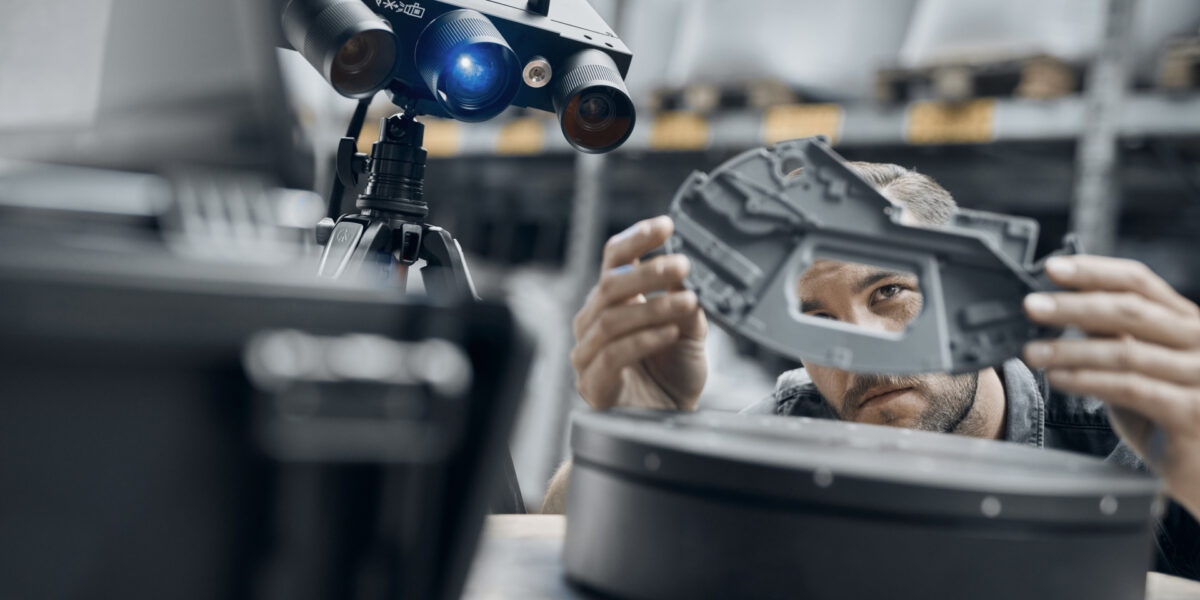Ever seen a 3D printer in action and thought, “Wow, that’s sorcery!”? Well, hold onto your hats, because today we’re diving into something just as fascinating: 3D scanning. It’s the tech that captures the world in three dimensions and turns it into digital form. Imagine being able to scan an object and have a digital model of it on your computer in mere minutes. It’s like having a magic wand, except it’s all science and no rabbits are involved. Let’s break down the nitty-gritty of how this works and why it’s revolutionizing industries faster than you can say “beam me up, Scotty!”
What is 3D Scanning Anyway?
At its core, 3D scanning is the process of analyzing a real-world object or environment to collect data on its shape and appearance. This data is then used to create three-dimensional models. The scanners themselves are varied, ranging from laser scanners to photogrammetry-based devices. These models can be used in various applications, from industrial design and orthotics to virtual reality and gaming.
The Types of 3D Scanners

The types of 3D scanners are as diverse as the applications they serve. Here’s a quick rundown:
- Laser Scanners: Using laser technology, these devices measure the distance between the scanner and the object by timing the reflection of the laser beam. The data collected is highly accurate, making it ideal for engineering and quality control.
- Structured Light Scanners: These project a series of light patterns onto an object and capture the deformation of the patterns to map the object’s surface. They are fast and effective, perfect for capturing intricate details.
- Photogrammetry: This technique uses photographs from different angles to recreate a 3D model. It’s like being the paparazzi of objects, snapping shots from every angle to piece together a complete picture.
- Contact Scanners: Unlike the others, these require physical contact with the object. They’re more like a traditional archaeologist, feeling out the contours to create a digital impression.
The Process: Scanning Step-by-Step
1. Data Collection
First, the scanner collects data points from the object’s surface, which can be millions of points in the case of detailed models. This data forms a “point cloud,” a digital representation of the object in 3D space.
2. Processing the Data
After collection, the data is processed to remove noise and fill in gaps. This step is crucial for generating a coherent model. Think of it like polishing a rough diamond to reveal its brilliance.
3. Creating the 3D Model
Once the data is clean, software converts the point cloud into a mesh, a network of polygons that form the object’s surface. This mesh can be textured and colored to match the original object, creating a highly realistic digital avatar.
4. Application and Use
The final model can then be used in various applications, from 3D printing to game design. The possibilities are as endless as the universe—okay, maybe that’s an exaggeration, but you get the idea.
Why 3D Scanning is a Game Changer

So why is 3D scanning such a big deal? For starters, it’s incredibly efficient. Traditional methods of creating 3D models can be time-consuming and labor-intensive. With a 3D scanner, you can capture the complexity of an object with the click of a button. It’s like having an artist who never sleeps and always gets your good side.
Industries Benefiting from 3D Scanning
- Healthcare: From dental implants to prosthetics, 3D scanning is revolutionizing personalized medicine.
- Manufacturing: Quality control and design iteration have never been more streamlined.
- Entertainment and Gaming: Hyper-realistic characters and environments are just a scan away.
- Architecture: Detailed scans of existing structures can aid in restoration and preservation efforts.
The Science Behind the Scenes
Alright, let’s geek out a bit more. The science behind 3D scanning is rooted in mathematics and physics. The scanners calculate distances using triangulation, time-of-flight, or phase shift methods. It’s a bit like echolocation, but without the cute dolphins. These techniques allow scanners to determine the exact position of each point in the point cloud relative to the scanner.
Laser scanners, for instance, emit a laser beam that strikes the object and reflects back to a sensor. The time it takes for the laser to return is used to calculate the distance. Structured light scanners, on the other hand, use patterns of light to achieve a similar result. Photogrammetry relies on algorithms that can identify common points in multiple images and calculate their position in 3D space.
Challenges and Limitations
Of course, no technology is without its hurdles. 3D scanning can be affected by surface properties like reflectivity or transparency, which can skew results. Scanning complex objects can also result in large datasets that require significant processing power. And let’s not forget the learning curve; becoming proficient in 3D scanning and modeling can take time and practice.
The Future of 3D Scanning
As technology advances, 3D scanning is only going to become more accessible and more precise. We’re already seeing portable scanners that can fit in a backpack, making fieldwork and on-site scanning more convenient than ever. As software algorithms improve, the accuracy and efficiency of data processing will also see significant gains. Imagine a future where you can scan an entire room in seconds, and then walk through it in VR like you’re in a sci-fi movie.
So, whether you’re a tech enthusiast, a professional in a related field, or just someone who thinks lasers are cool (who doesn’t?), 3D scanning is a technology that’s worth keeping your eye on. Who knows, it might just change the way we interact with the world around us. Or at the very least, it’ll give you a fun fact to share at your next dinner party.